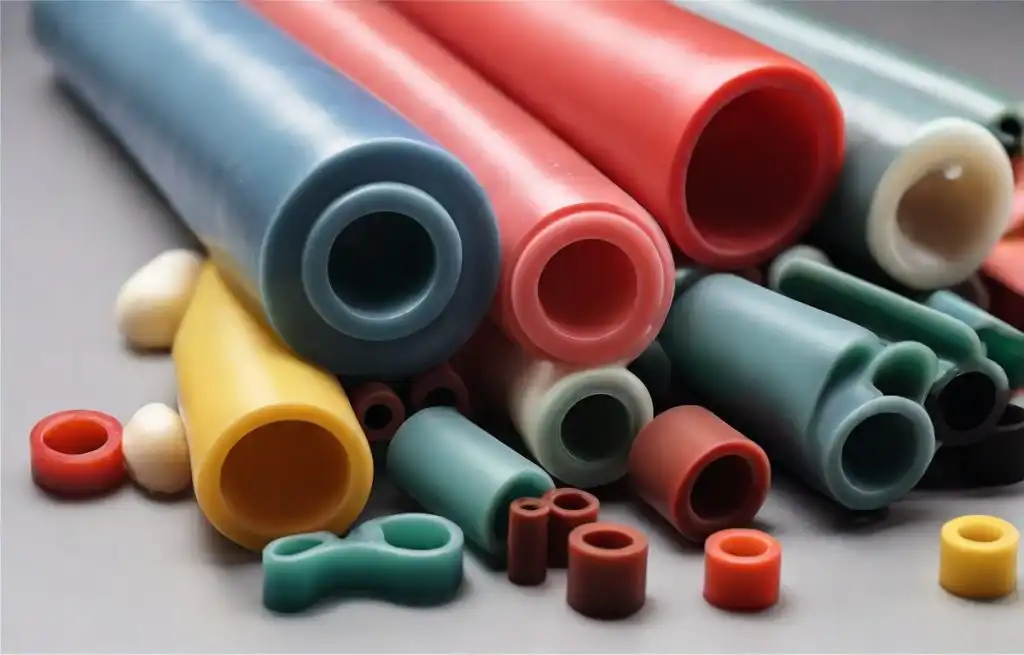Messi Biology states that although magnesium hydroxide has become the mainstream flame retardant for TPE, several major pain points have existed for a long time:

- Excessively High Addition Levels: To achieve V0-grade flame retardancy, the loading of traditional magnesium hydroxide needs to reach 40%~60% of the TPE matrix. This leads to a decline in material elasticity and increased processing difficulty (e.g., embrittlement and poor fluidity).
- Insufficient Compatibility: Magnesium hydroxide is an inorganic powder with poor compatibility with organic TPE molecules. It is prone to precipitation and agglomeration, affecting the appearance and service life of the products.
- Single Functionality: Traditional magnesium hydroxide can only provide flame retardancy and cannot meet the demands of high-end fields for multi-functional properties such as “flame retardancy + antibacterial + thermal conductivity.”
To break through these bottlenecks, a wave of technological innovation has emerged in the industry in recent years. Hebei Messi Biology Co., Ltd. is promoting the “evolution” of magnesium hydroxide in Thermoplastic Elastomers (TPE) from three major directions: modification, compounding, and green production.
Surface Modification: The Core Technology for Solving Compatibility Issues
By covering the surface of magnesium hydroxide particles with a layer of “bridge molecules” (coupling agents and compatibilizers), the inorganic powder can be tightly bonded with the organic TPE:
- New Coupling Agent Technology: Traditional silane coupling agents have limited modification effects. The currently developed titanate and aluminate coupling agents can increase the interfacial bonding strength between magnesium hydroxide and TPE by more than 50%. For example, using titanate-modified magnesium hydroxide, the addition level can be reduced to 30% to achieve V0-grade flame retardancy, while maintaining the TPE tensile strength above 18 MPa (compared to only 12 MPa when unmodified).
- Plasma Surface Treatment: Through low-temperature plasma technology, active groups such as hydroxyl and carboxyl groups are introduced onto the surface of magnesium hydroxide particles, allowing them to form chemical bonds with TPE molecules. This technology can improve the dispersion of magnesium hydroxide by 80%, resulting in a product surface with no precipitation or pitting, and a smoother appearance.
- Fatty Acid Modification: Using fatty acids like stearic acid and palmitic acid to coat magnesium hydroxide reduces its surface polarity, improving compatibility with non-polar TPEs (such as TPR and TPU). The addition level of modified magnesium hydroxide can be reduced to 25%, and the elongation at break of the TPE remains above 500% (compared to only 300% when unmodified).
Composite Synergy: Reducing Addition Levels and Enhancing Performance
The flame retardant efficiency of single magnesium hydroxide is limited. By compounding it with other flame retardants, “synergistic flame retardancy” can be achieved, reducing addition levels and improving performance:
- Magnesium Hydroxide + Aluminum Hydroxide (ATH) Compounding: The decomposition temperature of aluminum hydroxide is 180°C, while magnesium hydroxide decomposes at 280°C. Together, they form a “temperature gradient,” absorbing heat and cooling down the material throughout the process. When compounded at a 1:1 ratio, the addition level can be reduced to 20%~25% while reaching V0 grade, significantly improving TPE flexibility. A yoga mat produced by a certain enterprise using this composite system achieved a tensile rebound rate of over 95%.
- Magnesium Hydroxide + Carbon Material Composite: Carbon materials like graphene and carbon nanotubes possess high thermal conductivity and barrier properties. When compounded with magnesium hydroxide, they not only enhance the flame retardant effect (reducing addition levels to 15%~20%) but also improve the thermal conductivity of the TPE. For example, seals for new energy vehicle battery packs using Magnesium Hydroxide/Graphene composite TPE saw their thermal conductivity increase from 0.2 W/(m·K) to 1.5 W/(m·K), effectively solving battery heat dissipation issues.
- Magnesium Hydroxide + Nitrogen-based Flame Retardant Compounding: Nitrogen-based flame retardants (such as Melamine Cyanurate) release nitrogen gas upon combustion, which, combined with the water vapor from magnesium hydroxide, forms a “double dilution” effect while generating a denser char layer. After compounding, the addition level can be reduced to 18%, and TPE processing fluidity increases by 30%, making it suitable for injection molding of complex products (such as electronic equipment housings).
Nanotechnology: The Key to Improving Flame Retardant Efficiency
Nano-magnesium hydroxide (particle size under 100nm) has become key to improving flame retardant efficiency due to its advantages of “high specific surface area and high reactivity”:
- Nanotech Enhancing Efficiency: The specific surface area of nano-magnesium hydroxide is 10~20 times that of traditional micron-grade products, providing a larger contact area with TPE and significantly improving flame retardant efficiency. An addition level of only 10%~15% is required to achieve V0 grade without affecting TPE elasticity.
- Enhancing Mechanical Properties: Nano-magnesium hydroxide can be uniformly dispersed in the TPE molecular gaps, acting as a “reinforcement,” increasing TPE tensile strength by 20%~30% and tear strength by over 40%. For example, TPE automotive weatherstrips modified with nano-magnesium hydroxide achieved a tensile strength of 25 MPa, a 56% increase over traditional products.
- Solving the Agglomeration Problem: Nanoparticles are prone to agglomeration. Nowadays, through “in-situ polymerization” technology, nano-magnesium hydroxide is generated directly during the TPE synthesis process, avoiding agglomeration. A TPE wire sheath produced by a company using this technology showed uniform dispersion of nano-magnesium hydroxide, achieving V0 grade flame retardancy with flexibility comparable to pure TPE without flame retardants.
From surface modification to composite flame retardancy, and from nanotechnology to green production, the technological upgrade of magnesium hydroxide in Thermoplastic Elastomers (TPE) has never stopped. In the future, this “Eco-friendly + High Performance” material will continue to empower more industries, promoting the development of the materials industry towards a low-carbon and sustainable direction while ensuring safety.
